
Jay DeFeo was a visual artist who became celebrated in the 1950s as part of the spirited community of Beat artists, musicians, and poets in San Francisco. Best known for her monumental work The Rose, DeFeo produced courageously experimental works throughout her career, exhibiting what art critic Kenneth Baker called “fearlessness.”

Stephanie Syjuco, is a Filipino-American conceptual artist and educator. Born in the Philippines, she moved to the San Francisco Bay Area in 1977. Syjuco received her MFA from Stanford University in 2005, and BFA in Sculpture from the San Francisco Art Institute in 1995. She currently lives and works in Oakland, California.
The Bay Area Figurative Movement was a mid-20th Century art movement made up of a group of artists in the San Francisco Bay Area who abandoned working in the prevailing style of Abstract Expressionism in favor of a return to figuration in painting during the 1950s and onward into the 1960s.
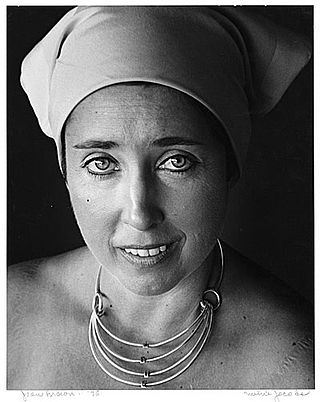
Joan Brown was an American figurative painter who lived and worked in Northern California. She was a member of the "second generation" of the Bay Area Figurative Movement.

Robert Carston Arneson was an American sculptor and professor of ceramics in the Art department at University of California, Davis for nearly three decades.
Squeak Carnwath is an American contemporary painter and arts educator. She is a professor emerita of art at the University of California, Berkeley. She has a studio in Oakland, California, where she has lived and worked since 1970.
Maxwell Hendler is an American painter. In 1975, he became the first contemporary artist to have pictures in the collection of the Metropolitan Museum of Art in New York.
The SECA Art Award is a contemporary art award program that has been organized by the San Francisco Museum of Modern Art (SFMOMA) and supported by its auxiliary SECA since 1967 to honor San Francisco Bay Area artists. It includes an SFMoMA exhibition, an accompanying catalogue, and a modest cash prize. The SECA Art Award distinguishes “artists working independently at a high level of artistic maturity whose work has not, at the time of recommendation, received substantial recognition."
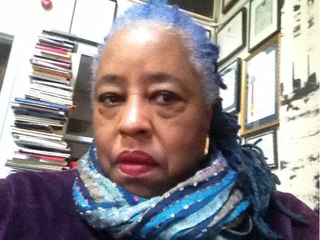
Mildred Howard is an African-American artist known primarily for her sculptural installation and mixed-media assemblages. Her work has been shown at galleries in Boston, Los Angeles and New York, internationally at venues in Berlin, Cairo, London, Paris, and Venice, and at institutions including the Oakland Museum of California, the de Young Museum, SFMOMA, the San Jose Museum of Art, and the Museum of the African Diaspora. Howard's work is held in the permanent collections of numerous institutions, including the San Francisco Museum of Modern Art, the Oakland Museum of California, and the Ulrich Museum of Art.
Robert Boardman Howard (1896–1983), was a prominent American artist active in Northern California in the first half of the twentieth century. He is also known as Robert Howard, Robert B. Howard and Bob Howard. Howard was celebrated for his graphic art, watercolors, oils, and murals, as well as his Art Deco bas-reliefs and his Modernist sculptures and mobiles.
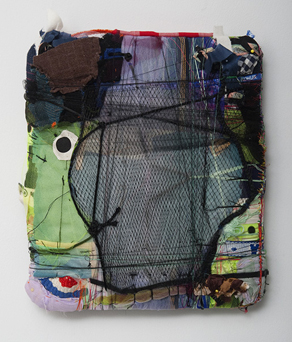
Julia Couzens is a California-based, American artist known for a diverse body of work that embraces unconventional materials and methods and includes drawing, sculpture, installation art, and writing. Critic David Roth identifies as a connecting thread in her evolving work, her "decidedly surrealist-symbolist sensibility, in which eroticism, the grotesque and the gothic mix in equal parts." Her work has been shown internationally and throughout the United States, including solo exhibitions at the Christopher Grimes Gallery and California State University, Stanislaus (2009), in surveys at the University of California, Davis and Sonoma Museum of Visual Art (1999), and group shows at the Crocker Art Museum, P•P•O•W, Orange County Museum of Art, Hammer Museum, and BAMPFA, among others. Her art has been reviewed in the Los Angeles Times, San Francisco Chronicle, Flash Art, New Art Examiner, and Art Practical, among other publications, and collected by institutions including the Crocker Art Museum, Fine Arts Museums of San Francisco, Oakland Museum of California and Butler Institute of American Art, among many. In addition to working as an artist, Couzens has taught at several Southern California universities and writes about contemporary art for The Sacramento Bee and Squarecylinder. She lives and works on Merritt Island in the Sacramento River delta community of Clarksburg and maintains a studio in downtown Los Angeles.
Rebeca Bollinger is an American artist. She works with sculpture, photography, video, drawing, installation, writing and sound.
Gay Outlaw is an American artist working in sculpture, photography and printmaking. She is known for her "rigorous and unexpected explorations of material". She is based in San Francisco, California.

M. Louise Stanley is an American painter known for irreverent figurative work that combines myth and allegory, satire, autobiography, and social commentary. Writers such as curator Renny Pritikin situate her early-1970s work at the forefront of the "small, but potent" Bad Painting movement, so named for its "disregard for the niceties of conventional figurative painting." Stanley's paintings frequently focus on romantic fantasies and conflicts, social manners and taboos, gender politics, and lampoons of classical myths, portrayed through stylized figures, expressive color, frenetic compositions and slapstick humor. Art historians such as Whitney Chadwick place Stanley within a Bay Area narrative tradition that blended eclectic sources and personal styles in revolt against mid-century modernism; her work includes a feminist critique of contemporary life and art springing from personal experience and her early membership in the Women's Movement. Stanley has been awarded a Guggenheim Fellowship and grants from the Pollock-Krasner Foundation, Adolph and Esther Gottlieb Foundation, and National Endowment for the Arts. Her work has been shown at institutions including PS1, San Francisco Museum of Modern Art (SFMOMA), The New Museum and Long Beach Museum of Art, and belongs to public collections including SFMOMA, San Jose Museum of Art, Oakland Museum, and de Saisset Museum. Stanley lives and works in Emeryville, California.
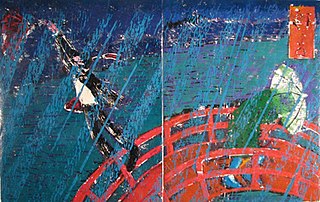
Robert Brokl is an American visual artist and activist based in the Bay Area, known for expressive woodblock printmaking and painting that has focused on the figure, landscape and travel for subject matter. His visual language combines the influences of German Expressionism, Japanese woodblock printing and the Bay Area Figurative Movement with a loosely autobiographical, Romantic interest in representing authentic personal experience, inner states and nature. Critics and curators characterize his style by its graphic line, expressive gestural brushwork, tactile surfaces and sensitivity to color, mood and light.

Johanna Poethig is an American Bay Area visual, public and performance artist whose work includes murals, paintings, sculpture and multimedia installations. She has split her practice between community-based public art and gallery and performance works that mix satire, feminism and cultural critique. Poethig emerged in the 1980s as socially engaged collaborations with youth and marginalized groups gained increasing attention; she has worked as an artist and educator with diverse immigrant communities, children from five to seventeen, senior citizens, incarcerated women and mental health patients, among others. Artweek critic Meredith Tromble places her in an activist tradition running from Jacques-Louis David through Diego Rivera to Barbara Kruger, writing that her work, including more than fifty major murals and installations, combines "the idealist and caustic."
Nancy Genn is an American artist living and working in Berkeley, California known for works in a variety of media, including paintings, bronze sculpture, printmaking, and handmade paper rooted in the Japanese washi paper making tradition. Her work explores geometric abstraction, non-objective form, and calligraphic mark making, and features light, landscape, water, and architecture motifs. She is influenced by her extensive travels, and Asian craft, aesthetics and spiritual traditions.
Irene Pijoan was a Swiss-born American painter, sculptor, and educator. She was active in the San Francisco Bay Area and taught at the San Francisco Art Institute for more than 20 years.
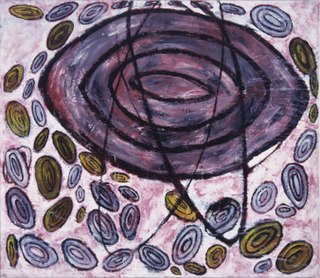
Joan Moment is an American painter based in Northern California. She emerged out of the 1960s Northern California Funk art movement and gained attention when the Whitney Museum of American Art Curator Marcia Tucker selected her for the 1973 Biennial and for a solo exhibition at the Whitney in 1974. Moment is known for process-oriented paintings that employ non-traditional materials and techniques evoking vital energies conveyed through archetypal iconography. Though briefly aligned with Funk—which was often defined by ribald humor and irreverence toward art-world pretensions—her work diverged by the mid-1970s, fusing abstraction and figuration in paintings that writers compared to prehistoric and tribal art. Critic Victoria Dalkey wrote that Moment's methods combined chance and improvisation to address "forces embodied in a universe too large for us to comprehend, as well as the … fragility and transience of the material world."
Elizabeth Hernández is a Mexican-born American visual artist and designer. She works many mediums including in painting, murals, ceramics, and embossed aluminum sculpture. She lives in Oakland, California.











